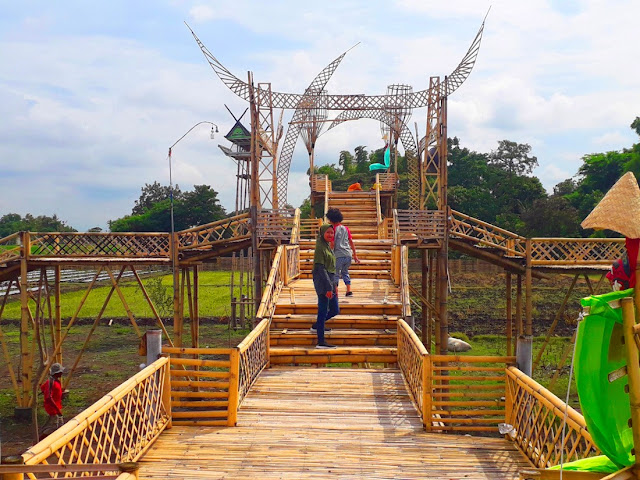It was a bright and sunny morning in Situbondo, and as usual, the coastal heat began to creep in as the sun climbed higher. But that day felt different—I was heading out with some friends to explore a lesser-known spot called Karang Kenek 26. The name alone sparked curiosity. People said it wasn't just a beautiful village, but also wrapped in a mysterious legend passed down for generations.
How to Get There: Easy and Quick!
Karang Kenek 26 is located in Dusun Karang Kenek, Olean Village, Situbondo District. It’s only about 6–7 kilometers from Situbondo’s city center, which makes it a quick 15–20 minute ride by motorcycle or car. Unfortunately, no public transport routes directly to the site, so having your own ride is a must.
The road to the village is smooth overall, although it gets narrower in some areas as you pass through residential neighborhoods. When we arrived, the peaceful vibes of the village hit immediately—lush trees, clean air, and welcoming locals. Entry is free, but you’re expected to sign the guestbook at the entrance, which helps them track visitors and support community-based tourism.
A Village with a Legendary Limit
Karang Kenek 26 isn’t just a quiet rural village. It’s believed to be home to only 26 families—no more, no less. Legend says that if the number of households exceeds 26, misfortune may follow. Some stories tell of newcomers who couldn’t adapt or even passed away after settling there.
The myth traces back to a local figure named Prince Tunggul Angin. Some say he was from the Andolang royal family in Madura. One version of the story tells that he came with 30 disciples, four of whom died in battle when attacked by outsiders. Another version claims that Prince Tunggul Angin made a pact with supernatural beings, requiring four disciples to leave the village to maintain spiritual balance.
Whether you believe it or not, these tales are embraced as cultural heritage—adding depth and intrigue to the natural beauty of the area.
Nature, Calmness, and Community
From a tourist’s perspective, Karang Kenek 26 is the perfect escape for those seeking serenity. Traditional homes line the village pathways, framed by rice fields and gentle hills. It’s even more magical during golden hour when the sun casts a soft glow over the landscape.
The villagers are friendly and open to sharing their stories. A simple stroll through the village can turn into a mini history tour if you strike up a conversation with a local elder.
What to Do at Karang Kenek 26
Though the site is relatively low-key, there are a few simple activities that make the visit worthwhile:
- Casual trekking around the village – Enjoy nature, fresh air, and photogenic scenery.
- Chat with the locals – Hear firsthand about the legend of Prince Tunggul Angin and their unique customs.
- Photography – From rustic homes to green fields, there are plenty of charming backdrops for your travel album.
If you happen to visit during a traditional ceremony, like a local thanksgiving ritual, you’ll get to witness cultural traditions that are still practiced to this day.
Travel Tips for Karang Kenek 26
Visit in the morning or late afternoon – The light is perfect for photos and the weather is cooler.
Wear comfy shoes or sandals – Expect to walk a bit, especially if you want to explore the entire village.
Respect local beliefs – Avoid mocking or dismissing the village’s myths, even in jest.
Bring your own snacks and water – There aren’t many shops nearby, so better to come prepared.
Go with friends or family – The stories and atmosphere are more fun to experience and talk about together.
Final Thoughts
Karang Kenek 26 is not your typical tourist destination. It’s a place where natural charm meets deep-rooted folklore, creating a rich and memorable travel experience. If you’re craving something different—away from the crowded beaches and busy tourist hubs—this mystical village in Situbondo might just be your next hidden gem to explore. Who knows, you might even go home with more than just pictures—maybe a story or two that you’ll never forget.





0 Comments